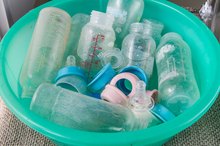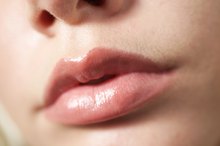What does fact checked mean?
At Healthfully, we strive to deliver objective content that is accurate and up-to-date. Our team periodically reviews articles in order to ensure content quality. The sources cited below consist of evidence from peer-reviewed journals, prominent medical organizations, academic associations, and government data.
The information contained on this site is for informational purposes only, and should not be used as a substitute for the advice of a professional health care provider. Please check with the appropriate physician regarding health questions and concerns. Although we strive to deliver accurate and up-to-date information, no guarantee to that effect is made.
How to Get Ink Out of Your Mouth
Liquid ink is made up of pigments and dyes and used by most pen manufacturers. Ink has been used by people as far back as the 18th century for drawing and writing. While most ink used in pens today is nontoxic, it is important to not place pens in your mouth. If a pen is in the mouth and breaks, ink can spill out into the mouth.
If you are experiencing serious medical symptoms, seek emergency treatment immediately.
Wash your mouth out with water immediately after getting ink in it.
How to Get Stains Off of Dentures
Learn More
Continue rinsing and spitting until you can get as much ink as possible out of the mouth.
Call Poison Control at 1-800-222-1222 if any ink was swallowed 2.
Recipe for Homemade Denture Adhesive
Learn More
Brush your teeth well with a non-gel toothpaste to remove ink from the mouth and teeth. Scrub the entire inside of the mouth with the toothpaste and a toothbrush. Rinse with water and repeat to remove more ink.
Pour a glass of milk, take a drink and allow the milk to sit in your mouth for as long as you can. Milk often removes ink stains. Spit the milk out and repeat.
Place a small dab of shortening in your mouth and rub it around to cover the portion of the mouth with the ink stains. Use a clean towel or paper towel to wipe the shortening and ink out of the mouth.
Make a paste of two parts vinegar and three parts cornstarch. Rub the paste on the inside of the mouth but do not swallow. Allow the paste to sit for a few minutes. Rinse your mouth out with water until all the paste and much of the ink is removed.
Tips
Keep ink pens and markers away from children to prevent ink from getting in their mouths. Avoid placing an ink pen in your mouth.
Warnings
Call Poison Control immediately if a child swallows more than one ounce of ink.
Related Articles
References
- Medline Plus: Ink Poisoning
- Kids Health: U.S. Poison Control Centers
- Reader's Digest Version: 10 Ink Stain Solutions
- American Dental Association (ADA). Xerostomia (Dry Mouth). Department of Scientific Information, ADA Science Institute. Updated July 9, 2019.
- Bartels C. Xerostomia. The Oral Cancer Foundation. Updated October 15, 2018
- Barnhart MK, Robinson RA, Simms VA, et al. Treatment toxicities and their impact on oral intake following non-surgical management for head and neck cancer: a 3-year longitudinal study. Support Care Cancer. 2018;26(7):2341-2351. doi:10.1007/s00520-018-4076-6
- Centers for Disease Control and Prevention. Candida Infections Of The Mouth, Throat, And Esophagus | Fungal Diseases | CDC. National Center for Emerging and Zoonotic Infectious Diseases (NCEZID), Division of Foodborne, Waterborne, and Environmental Diseases (DFWED). Updated November 13, 2019.
- V Sankar, N Rhodus, & the AAOM Web Writing Group. Xerostomia. The American Academy of Oral Medicine. Updated October 15, 2015.
- Rusthen S, Kristoffersen AK, Young A, Galtung HK, Petrovski BÉ, Palm Ø et al. Dysbiotic salivary microbiota in dry mouth and primary Sjögren's syndrome patients. PLoS One. 2019 Jun 18;14(6):e0218319. doi: 10.1371/journal.pone.0218319.
- V Sankar, N Rhodus & the AAOM Web Writing Group. Dry Mouth. The American Academy of Oral Medicine. Updated October 15, 2015.
- American Dental Association. Dry Mouth. Mouth Healthy. Updated January 2019.
- Men K, Geng H, Zhong H, Fan Y, Lin A, Xiao Y. A deep learning model for predicting xerostomia due to radiotherapy for head-and-neck squamous cell carcinoma in the RTOG 0522 clinical trial. Int J Radiat Oncol Biol Phys. 2019 Jun 12. pii: S0360-3016(19)30834-X. doi:10.1016/j.ijrobp.2019.06.009.
- National Institutes of Health. Dry Mouth. National Institute of Dental and Craniofacial Research. Updated January 2019.








